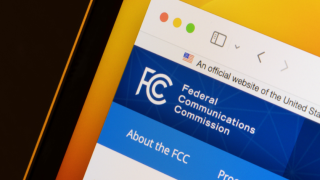Already we are seeing moves by international standards and regulatory organisations to lay the groundwork for 6G.
For example, 3GPP, the global cellular standardisation body, has already announced its plan to create the first 6G specifications by 2029. Additionally, the World Radio Communication Conference 2023 identified several potential bands for 6G, including spectrum in the 6-15 GHz range that have ideal characteristics for 6G use.
Finally, the International Telecommunication Union (ITU) published its framework for initial requirements for IMT-2030, which is the nomenclature it uses for 6G.
Why should we care?
6G standardisation matters as it translates the promise of 6G into an actual tangible system, as well as years of research into reality. The features and capabilities we define today will appear in live networks and devices in the future.
Furthermore, the standardisation process is a proving ground for innovation. The concepts and technologies crafted by researchers and documented by research alliances will be put to the test of global industry scrutiny. This is what makes the standardisation process so vital.
Ultimately, these standards will play a pivotal role in the future of telecommunications and digital infrastructure, determining how networks will be built and deployed and how industry stakeholders can derive value from these new 6G capabilities.
While we can’t foresee the exact customer value proposition of 6G at this early incubation stage, it is safe to say 6G will continue to fuel the ever-growing impact that cellular connectivity makes on the global economy.
What does the future of 6G look like?
So what are these new standardised 6G capabilities that will unlock this value potential expected by the industry and the global economy at large?
To start with, 6G will bring and mandate a new much-elevated baseline performance for both the networks and devices. Recent 5G-Advanced releases in 3GPP have developed many new capabilities around energy efficiency, uplink performance and coverage enhancements.
However, these features are not appearing in the field yet, and even if they do, they will make very little tangible difference given the massive 5G legacy device population. 6G day-one deployments will mandate many of these features in both networks and devices.
Next, AI will have the same transformative effect on 6G as it is having on every other aspect of digital society. AI’s integration into 6G will create networks that are not only faster and more efficient but also smarter and more adaptable to the needs of users and service providers. As a result of AI, we will see superior deep-learning receiver performance, prediction-based energy efficiency and more predictable device performance.
Thirdly, we believe that the 6G cellular platform will be designed as a highly sustainable system from day one. This will minimise the network’s power consumption from the first commercial deployment. Mobile operators are keen to keep their energy bills at current levels, and the wider ICT industry is looking for an opportunity to reduce its energy footprint. It’s not enough that 6G injects new capacity and functionality into our networks. It must add this value without increasing total energy consumption.
Finally, 6G will bring many new use cases. A lot of stars must align before we can predict the exact portfolio of new 6G applications and services in 2030, but collaborative robots, mass digital twinning, sensing, extreme autonomation and many more services are all in the realm of possibility.
Enabling immersive experiences
One particularly interesting use case is worth calling out: the consumer device. 4G and 5G owe their success to the smartphone ecosystem. While smartphones will still have a huge presence in 6G, we should expect a far more diverse device ecosystem in the 6G era.
These devices will bring a truly immersive experience to commercial and professional users. They could take the form of new wearables, like XR glasses and connected clothing, or they could be AI assistants we carry in our pockets. This massive innovation cycle is just beginning, but it has the potential to transform the way people go about their lives.
These immersive experiences will fundamentally change the way people perceive cellular and open the door for differentiated and tailored value propositions. Therefore, it is crucial that 6G systems natively support a much wider variety of devices in the most efficient ways possible: from architecture design to protocol design to radio design.
A single standard
In the 21st century, we’ve enjoyed the benefits of a single global cellular standard, spearheaded by 3GPP. With each generation, cellular technology has grown to be an intrinsic part of our lives. Cellular has also started embedding itself in every nation’s critical infrastructure, and as a result, governments are interested in championing emerging cellular technology enablers. That has led to a lot of competing ideas about what 6G should be.
This competition, for the most part, is healthy. A competitive race brings a higher level of engagement and produces better results. But it is crucial to note that this race should not occur at the expense of an eventual single global 6G standard.
The industry needs to set realistic expectations and focus on driving the right overall understanding of what these global 6G standards will bring. We aren’t creating 6G as an “autopilot evolution” providing much of the same as prior generations. As new technologies and applications place greater demands on networks, 6G must be designed to meet those specific demands, not invent new ones.
We are at a turning point in networking generations, and we owe it to ourselves to refrain from exorbitant claims. At this early stage of 6G standardisation, we need to exhibit the voice of reason that will allow us to earn the trust of every 6G stakeholder.





